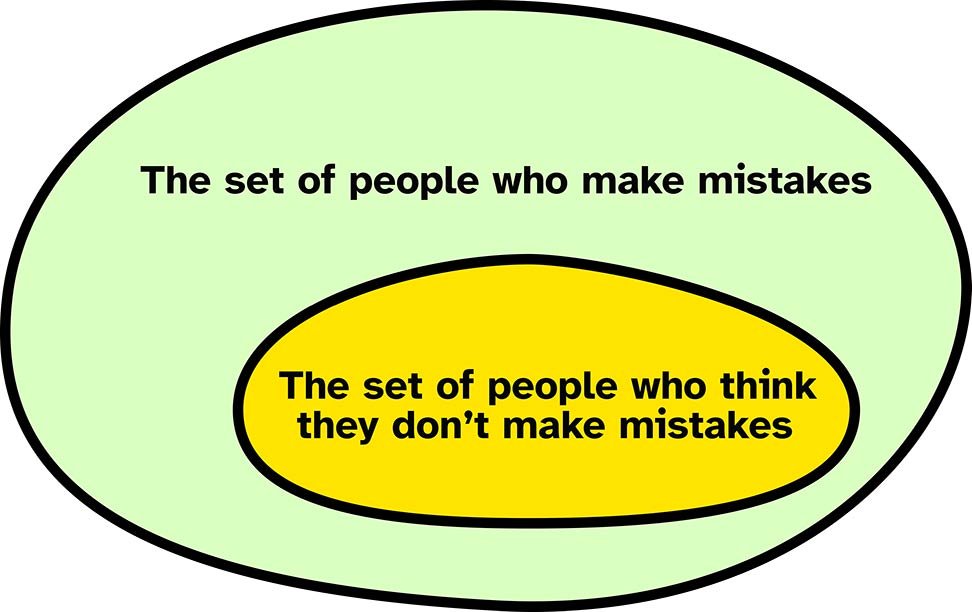I probably don’t have to tell you that pricing is slippery business. It requires a lot of perspective, experience, and luck (read: trial and error). There are a number of ways we can correlate monetary value to what we do, and each has its pros and cons.
Article Continues Below
It may seem at first glance that pricing models begin and end in the proposal phase of a project. That pricing is simply a business negotiation. But whether we’re talking about design, development, or business methodologies, our processes affect our motivations, and influence outcomes—often throughout the entire project. We’ll be examining both client and agency motivations in our comparisons of pricing models, so you can judge whether those motivations will help you make better work with your clients.
All of these pricing systems operate with the same set of variables: price, time, and scope. In some systems, such as hourly pricing, variables are directly dependent on each other (e.g. if I work an hour, I get paid my hourly rate, and deliver an hour’s worth of work). In others, like fixed price and value pricing, the relationships can be nonlinear (eg. I am paid a sum of money to achieve some set of results, regardless of how much time I spend doing it).
These dependencies tend to define each system’s inherent risk and potential for profit. And all the differences can get pretty bewildering. One person’s experience is hardly enough to understand them all well, so I’ve enlisted some friends from web agencies of various sizes to chime in about how they make things work.
As with most things in life, there’s no perfect solution. But if you want to get paid, you have to do something! Enough gum-flapping, let’s take a look at some of the different ways that people are pricing web projects.
With fixed-price projects, you and the client agree up front on a cost for the entirety of the project. Many folks arrive at this number by estimating how many hours they think it would take them to do the project, and multiplying that by an hourly rate. That cost will be what the client pays, regardless of actual hours spent.
Client motivation#section3
When the price of a project is fixed, the variable tends to become scope of work. This encourages clients to push for the maximum deliverables they can get for that cost. This can be addressed to a degree by agreeing on a time limit for the project, which keeps requests and scope changes from occurring in perpetuity.
Agency motivation#section4
On the agency side, your motivation is to be as efficient as possible to maximize the results while reducing time spent. Less time + more money = greater profit.
Pros#section5
Because you know exactly how much money is coming in, revenue is fairly predictable. And since revenue isn’t tied to the time you spend, profit is potentially greater than with a time-based model—especially when the cost is high and the timeline is short.
Cons#section6
The same factors that provide the possibility of greater profit create the potential for greater loss. Defining exactly what a client will receive for their money becomes a high priority—and defining things well can be harder than it sounds.
Eileen Webb, Director of Strategy and Livestock at webmeadow, provides some insight into how she defines scope with her clients:
I like to define the project boundaries clearly by having a “What’s Not Included” section. This may be a listing of services you don’t offer, like SEO or hosting. It’s also a place to list features that you and the client discussed but decided against for this budget or phase. Defining what falls outside the scope is a good way to help everyone agree on what falls in it.
Now, getting to this definition in the first place is—I probably don’t need to tell you—hard work. And hard work is something you should get paid for. Starting out with an initial discovery engagement is something nearly any project can benefit from, but for fixed-price projects it can be invaluable.
Resourcing for a fixed-price project can also be hard to estimate, since scope is not necessarily easy to equate to effort and person-hours needed.
But the primary difficulty with fixed price may be the innate conflict between a client’s motivation to ask for more, and an agency’s motivation to provide less. For a fixed-price project to be successful, this must be addressed clearly from the beginning. Remember that scope discussions are just that: discussions. More isn’t always better, and it’s our job to help keep everyone on the project focused on successful outcomes, not just greater quantities of deliverables.
At its core, hourly pricing is pretty simple: you work an hour, you get paid for an hour. Hourly, like all time-based pricing, suggests that what’s being paid for is less a product than a service. You’re being paid for your time and expertise, rather than a particular deliverable. Rob Harr, Technical Director at Sparkbox, explains how hourly projects tend to work for them:
Since everything we do is hourly, the end of the job is when the client says we are done. This sometimes happens when there is still approved budget left, and other times when the budget is completely gone. Often times our clients come back for additional SOW’s to continue the work on the original project.
Client motivation#section8
With hourly, clients are encouraged only to ask for work when that work appears to be worth the hourly cost. Since there’s no package deal, for each feature request or task they can ask themselves, “Is this worth spending my money on, or would I rather save it for something else?”
Project delays are not a financial concern for the client, as no money is spent during this time.
Agency motivation#section9
The more an agency works, the more they get paid. In its purest form, this leads to the agency simply wanting to work as much as possible. This can be limited by a few factors, including a budget cap, or not-to-exceed, on the project.
Project delays are a major concern for the agency, as they’ll lose revenue during these periods.
Pros#section10
Every hour a team member spends is paid for, so the risk of this model is very low. If a company is struggling with profitability, I’ve personally found that this is a great way to get back on track.
Cons#section11
Unlike fixed-price models, you can only earn as much as you can work. This means that profit maxes out fairly quickly, and can only be increased by increasing hourly rate (which can only go as high as the market will bear), or expanding the team size.
Because the agency is only paid when they work, this also means a big imbalance in how project delays affect both sides. Thus clients that aren’t in a big hurry to complete work—or have inefficient decision-making structures—may not worry about long delays that leave the agency financially vulnerable. This can be addressed somewhat by having conditions about what happens during delays (the client pays some sort of fee, or the project becomes disproportionately delayed so the agency can take on new work to fill the gap in their schedule). Even with these measures, however, delays will cause some kind of financial loss to the agency.
Though similar to hourly in many ways, charging by weekly or monthly blocks has some distinct differences. With these models, the cost assumes that people work a certain number of hours per week or month, and the client is billed for the equivalent number of hours, regardless of whether or not actual hours spent were more or less than assumed.
Trent Walton, founder of Paravel, explains why they like this approach:
Most of our clients operate in two-week or month-long sprints. For many projects, we’ll quote chunks of weeks or months to match. This alignment seems to make sense for both parties, and makes estimating scope and cost much easier.
Client motivation#section13
Clients tend to want the agency to work as much as possible during the time period to get the maximum amount of work or value. This can be curbed by having a maximum number of hours per week that will be spent, or understanding limitations like no nights or weekends. Related to this, it’s in the client’s best interest to not let project work succumb to delays.
Agency motivation#section14
On the agency side, we’re encouraged to be as efficient as possible to maximize results each week, while spending fewer hours accomplishing those tasks. As long as the results are comparable to what’s expected, this motivation tends not to result in conflict.
At Bearded we’ve found that with weekly projects we spend, on average, the number of hours we bill for. Some weeks a little more, some a little less. But it seems to all come out in the wash.
Pros#section15
Knowing that a time period is booked and paid for makes resourcing simple, and keeps the financial risk very low.
Because the agency is paid the same amount every week or month, clients will tend to do whatever’s necessary to avoid any delays that are in their control. This completely removes the risk of the agency losing money when projects are held up, but also requires the agency to use a process that discourages delays. For instance, at Bearded, we’ve moved to a process that uses smaller, more frequent deliverables, so we can continue working while awaiting client feedback.
Cons#section16
Similar to hourly, the agency’s profit is capped at the weekly or monthly rate they charge. To make more revenue they’ll need to charge more for the same amount of work, or hire more people.
Value pricing is a method wherein the cost of the project is derived from the client’s perception of the value of the work. That cost may be a fixed price, or it may be a price that factors in payment based on the effect the work has (something closer to a royalty system).
Dan Mall, founder of SuperFriendly, explains his take on value pricing using a fixed cost:
I use a combination of value pricing with a little of cost-plus. I try my best to search for and talk about value before we get to dollar amounts. When my customers are able to make a fully informed price/value assessment, the need to justify prices has already been done, so I rarely have to defend my prices.
Dan’s approach suggests that if a company stands to gain, say, millions of dollars from the work you do, then it doesn’t make sense for you to merely charge a few thousand. The value of your work to the company needs to be factored in, resulting in a proportionally larger fixed cost.
Other takes on value pricing tie the cost of the project directly to the results of the work. This can be assessed using whatever metrics you agree on, such as changes in revenue, site traffic, or user acquisitions. This sort of value pricing lends itself to being used as an add-on to other systems; it could augment an hourly agreement just as easily as a fixed price one.
It’s worth noting that none of the folks I talked to for this article have done this in practice, but the general approach is outlined in Jason Blumer’s article Pricing Strategy for Creatives.
Client motivation#section18
This depends primarily on the other system that you’re using in conjunction with value pricing. However, if a client recognizes the tangible gain they expect from the outset, this will tend to focus their attention on how the work will influence those outcomes.
Agency motivation#section19
When payment is tied to metrics, the focus for the agency will be on work that they believe will positively affect those metrics. Like client motivations, an agency’s other motivations tend to be the same as the other system this is based on (fixed, hourly, weekly, or monthly).
Pros#section20
Because of the nonlinear relationship between labor and revenue, this approach has the highest potential for profit. And as long as the base pricing is reasonable, it can also have very low financial risk.
Cons#section21
Since value pricing is potentially connected to things outside your control, it’s also potentially complicated and unpredictable. If revenue is based on future performance metrics, then accurately determining what you’re owed requires knowledge of those metrics, and likely a little legwork on your part. There’s also a certain amount of risk in delaying that payment until a future date, and having its existence in question altogether. As long as the base pricing you use is enough to sustain the business on its own, that risk seems less worrisome.
With value pricing, there’s also the need to assess the value of the work before agreeing on a price. Which is why—as with fixed-price projects—value-pricing projects often work well as a followup to an initial discovery engagement.
Patty Toland and Todd Parker, partners and co-founders of Filament Group, explain their approach to an initial engagement:
Most of the projects we engage in with clients involve fairly large-scale system design, much of which will be defined in detail over months. We provide high-level overall estimates of effort, time and cost based on our prior project work so they can get a sense of the overall potential commitment they’re looking at.
If those estimates work with their goals, schedule and budget, we then agree to an initial engagement to set a direction, establish our working relationship, and create some tangible deliverables.
With that initial engagement, we estimate the total amount of time in person-days we plan to spend to get to that (final) deliverable, and calculate the cost based on a standard hourly rate.
So what’s the best approach for you? Blimey, it depends! I’ve talked with many very smart, successful people that use very different takes on various approaches. Each approach has its benefits and its traps to watch for, and each seems to work better or worse for people depending on their personalities, predilections, and other working processes.
Ultimately it’s up to you. Your hunches, experience, and probably a little experimentation will help you decide which method makes the most sense for you, your team, and your clients. But don’t be surprised if once you find a good system, you end up changing it down the road. As a business grows and evolves, the systems that work for it can, too.
Now that we’ve talked about pricing methods, we’re ready to move on to something everyone’s really bad at: estimating! Stay tuned for that in part three of this series.



